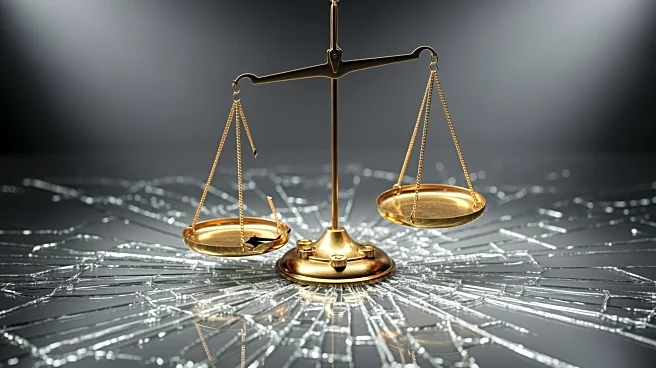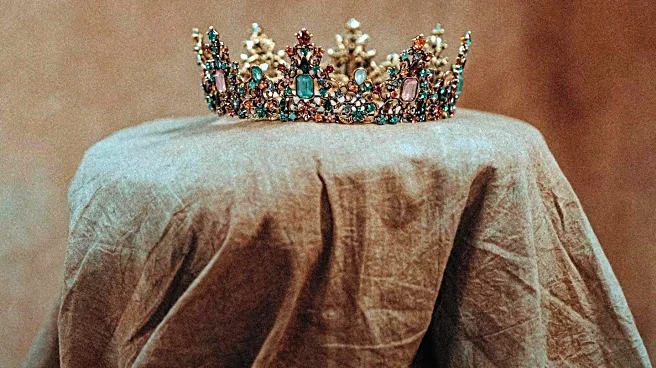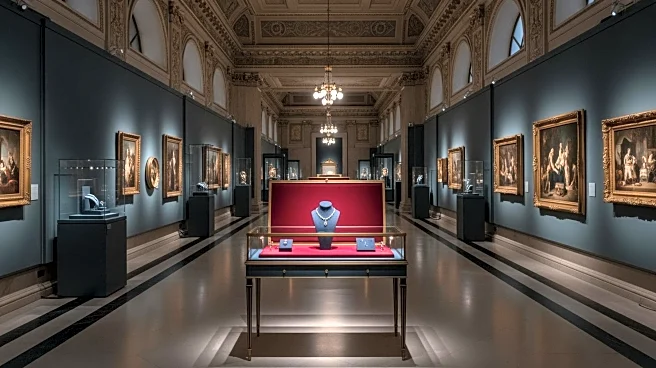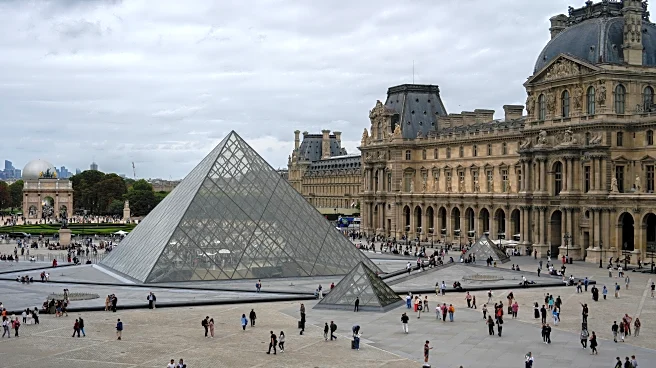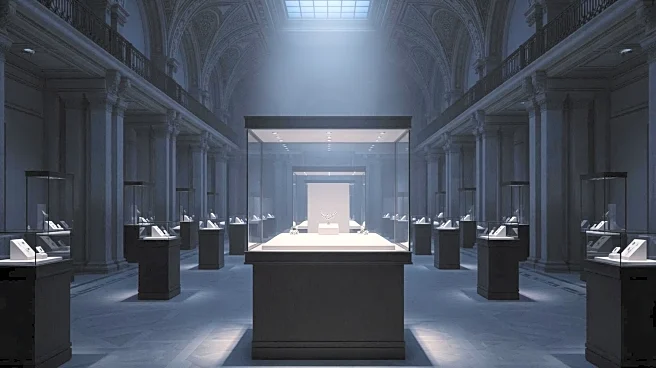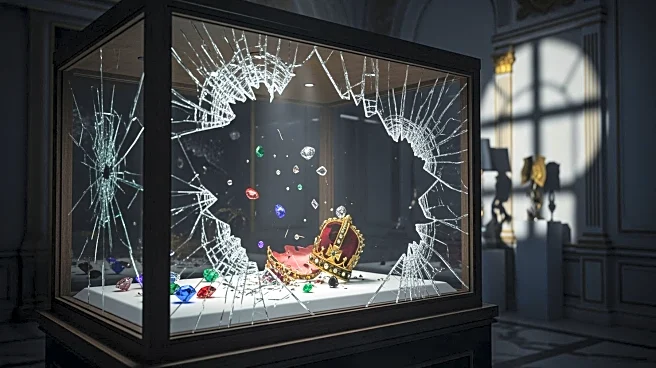What's Happening?
A major jewelry heist at the Louvre Museum in Paris has sparked criticism from French officials, including Justice Minister Gérald Darmanin, who stated that the incident has created a negative image for
France. Thieves used power tools to break into the museum in broad daylight, stealing eight items of inestimable value, including a diamond and emerald necklace given by Emperor Napoleon to his wife. The heist was executed in just seven minutes, with the thieves escaping on scooters. Concerns have been raised that the stolen items may be broken up and smuggled out of the country if the thieves are not caught quickly. French police are under pressure to apprehend the culprits, as the stolen jewels are at risk of being lost forever.
Why It's Important?
The Louvre heist highlights vulnerabilities in museum security and raises concerns about the protection of cultural heritage. The theft of such significant historical items not only impacts France's national pride but also poses challenges for international art recovery efforts. The incident underscores the need for improved security measures in museums to prevent organized crime from exploiting weaknesses. The potential loss of these artifacts could have long-term implications for cultural preservation and tourism, affecting France's reputation as a guardian of historical treasures.
What's Next?
French authorities are conducting an investigation to determine how the heist occurred and to identify the perpetrators. The police are racing against time to recover the stolen items before they are dismantled and sold on the black market. The incident may prompt a review of security protocols in museums across France, with potential upgrades to surveillance systems and alarm mechanisms. The government may also face pressure to allocate more resources to protect cultural heritage sites and prevent future thefts.
Beyond the Headlines
The Louvre heist raises ethical questions about the motivations behind art theft and the role of organized crime in exploiting cultural assets. The incident may lead to increased collaboration between international law enforcement agencies to combat art trafficking. Additionally, the theft could spark discussions on the importance of preserving cultural heritage and the responsibilities of nations to safeguard historical artifacts for future generations.
